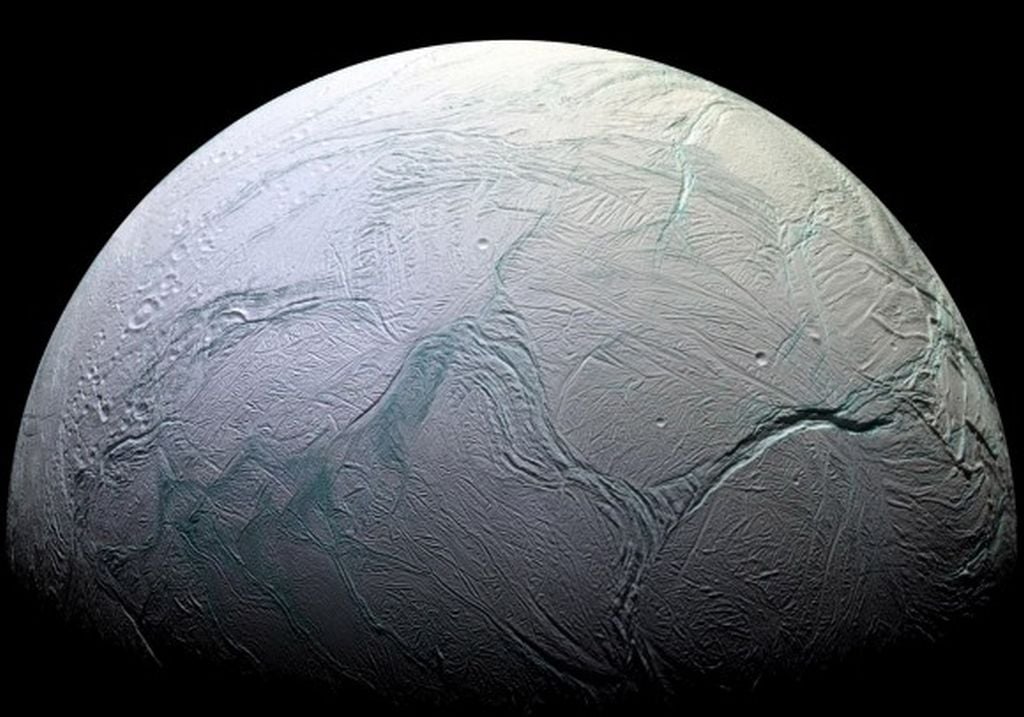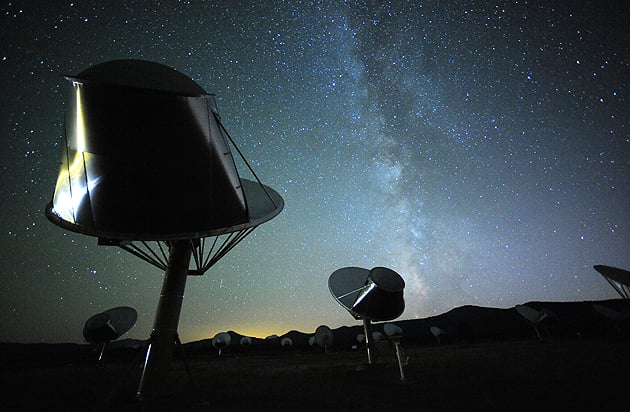
A new study from scientists with France's CNRS explains how comets like 67P/Churyumov-Gerasimenko acquire and retain their multi-lobed shapes.
Continue reading

It's a question I've gotten lots, now that the calendar has flipped over from February to March.
The satellite: When will we get our first good look at the Humanity Star reflector satellite?
Continue reading

Continue reading

Two stars are caught in a unique relationship. The larger red giant star sheds material which its companion neutron star consumes, producing x-rays as a result.
Continue reading

A recent study by a team of German scientists has demonstrated that a certain strain of Earth bacteria could survive on Enceladus
Continue reading

The ESA is working on artificially intelligent robots that could be controlled from a distance by astronauts. The pair could work as a team to accomplish maintenance and other tasks on future planetary missions.
Continue reading

Continue reading

Due to a mechanical failure, engineers at NASA JPL have developed a new method for the Curiosity drill, which was just tested successfully
Continue reading

Continue reading

While taking pictures of the Martian moons Phobos and Deimos, the Mars Express probe also captures pictures of Saturn in the background
Continue reading

Continue reading

In preparation for its maiden flight, StratoLaunch's Roc aircraft - the largest aircraft in the world - recently conducted its second successful taxi test
Continue reading

A new study by an international team of astronomers has determined that stars in the Milky Way's halo actually formed in our galaxy and were then kicked out
Continue reading

Reclusive SpinLaunch founder Jonathon Yaney recently broke his silence about his vision to reduce the costs of space exploration by developing a space catapult
Continue reading

Is Musk's Tesla Roadster in space a biological threat to life on other worlds, a back-up for life on Earth, or a harmless bauble?
Continue reading

Continue reading

An international team of astronomers recently conducted a study of the Milky Way center to determine why it has a comparatively low rate of star formation.
Continue reading

A new study recorded a massive flare coming from Proxima Centauri, a finding which casts doubt on it having any habitable planets.
Continue reading

Continue reading

A new survey performed by the SHoES team using Hubble has confirmed that the Universe is in an accelerated rate of expansion.
Continue reading

SOHO is celebrating a huge milestone, and one it was never intended to meet: it has now observed one complete, 22-year cycle in the life of the Sun.
Continue reading

Continue reading

Where have all the planets gone? The end of February 2018 sees the three naked eye outer planets – Mars, Jupiter and Saturn-- hiding in the dawn. It takes an extra effort to brave the chill of a February morning, for sure. The good news is, the two inner planets – Mercury and Venus – begin favorable dusk apparitions this week, putting on a fine sunset showing in March.
Continue reading

The microgravity in space makes astronauts' spines to elongate, causing back pain. A new SkinSuit being developed by the European Space Agency gives astronauts some relief.
Continue reading

NASA has released a mosaic image that shows exactly where the Cassini probe would crash into Saturn's atmosphere, mere hours before it did!
Continue reading

The Eruption of Mount Sinabung on the island of Sumatra, Indonesia, was recently photographed from space by satellites belonging to NASA's Earth Observatory
Continue reading

A team of ESA researchers recently tested a new type of shielding by firing an aluminum bullet at it and filming the results.
Continue reading

A recent study by an international team of scientists has indicated that there may be no connection between SMBHs and star formation in a galaxy.
Continue reading

After a few delays, SpaceX launched the first of its planned constellation of internet satellites, but failed to recover the fairings from the rocket.
Continue reading

In their latest attempt to reduce the costs of individual launches, SpaceX is looking to make their rockets payload fairings reusable.
Continue reading

Astronomers with the Dark Energy Survey have discovered the most distant and ancient supernova yet: a rare Super Luminous Supernova about 10.5 billion light years away.
Continue reading

Continue reading

Images released by NASA's Earth Observatory show how ice loss in the tropics is advancing, and how glaciers there will be gone within a decade.
Continue reading

The OSIRIS-REx mission once again provided a beautiful composite image of the Earth-Moon system, showing just how far it has ventured from Earth.
Continue reading

Scientists at Arizona State University wanted to find out what peoples' reactions would be to the announcement of the discovery of alien life. The result? We're mostly looking forward to it.
Continue reading

According to the Department of National Intelligence's (DNI) 2018 report, China and Russia could be developing technologies that will give them an edge in space.
Continue reading

A team of Japanese astronomers conducted the first detailed observation of a dust and gas torus surrounding a supermassive black hole.
Continue reading

The Opportunity rover just experienced its 5000th sunrise on Mars and is still revealing things about the Martian surface.
Continue reading

Subscribe to our weekly email newsletter, written by Universe Today publisher Fraser Cain.
Continue reading

Hubble images track the demise of an enormous storm in Neptune's atmosphere. Rather that expiring in a flash of atmospheric glory, the storm is slowly just fading away.
Continue reading

Continue reading

Continue reading

According to a recent study by a French-Chinese collaboration, the Andromeda galaxy (as we know it) is younger than we thought!
Continue reading

An award-winning astrophotographer in California has captured images of the Tesla Roadster and its driver "Starman" speeding through space.
Continue reading

According to the latest study by a team that has been observing 'Oumuamua since it was first discovered, this interstellar asteroid had a violent past!
Continue reading

According to a new study, there is a slim chance that Musk's Roadster (and Spaceman) could collide with Earth or Venus is a few eons.
Continue reading

The ESO's ESPRESSO instrument is getting all four of the telescopes at the Very Large Telescope to play nicely together, and the results will excite even the most discovery-weary space fan.
Continue reading

Continue reading

When the Mars 2020 arrives on the surface of the Red Planet, it will be carrying a piece of a Martian meteorite with it
Continue reading

This past December, the New Horizons probe took a series of pictures from the Kuiper Belt, thus breaking the record for the most distant images ever taken!
Continue reading

 Universe Today
Universe Today














































